Destination Mars: this month we're launching a series of programmes to probe what it's going to take to send people to the Red Planet. We'll be looking at rocket technology, how to keep people fed and watered away from Earth and whether we really can hope to exist sustainably on Mars. This week we're focusing on the space pioneers who will take the first steps towards getting us there. Plus, in the news, four intestinal bacteria that can prevent asthma, a new magnetic material to protect you in car crashes, and a magic bullet to stop bleeding...
In this episode
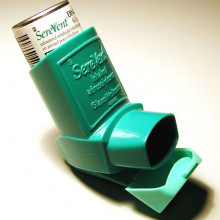
01:21 - Four gut bugs prevent asthma
Four gut bugs prevent asthma
with Dr Brett Finlay, University of British Columbia
The presence of four strains of intestinal bacteria might make the difference between a child breathing easily and developing lifelong asthma. Brett Finlay from the University of British Columbia explained his findings to Chris Smith...
Brett - Really, this is the first time we can actually demonstrate certain microbes influence asthma. We did this in children. We've had 319 children from across Canada that were already being studied from birth to age 5. What we did is we collected the faeces from these children at 3 months of age and 1 year of age. And then we began to analyse the microbes in there. Initially, we didn't see any gross differences either at 3 months or 1 year in the total bug population. But when we dug really deep, we started to see signature microbes and we quickly zeroed in on 4 microbes and we abbreviated these things FLVR. This is the first letters of their complex microbial names. The bottom line of this whole study was that if you had these 4 microbes, in your intestine at 3 months of age, you basically had a very decreased risk of asthma. If you didn't have these microbes, or had low level of these microbes, you had a much higher risk of asthma and those kids have now all gone on to develop asthma.
Chris - Now, is this biologically plausible though? Is there some way you can tie the presence or absence of those 4 specific strains of microbe to subsequent asthma or wheezing in these children?
Brett - Right. So there's a strong correlation and we also looked at some of the molecules that might be influencing asthma and there's things called short chain fatty acids which affect inflammation which could be related to asthma. But I think that the experiment that proved these microbes actually have a role is we took mice and these are what we called 'germ-free' mice, they're born sterile by C-section. They have no microbes in them period. We then took the faeces from a child at 3 months of age. We know that child actually went on to get asthma later in life. We took their child faeces and then put it into these microbe-free mice plus or minus these 4 microbes that we grew in the lab. And the we induced experimental asthma in these mice later in life. What we found is that when you add these 4 microbes, these mice basically don't get experimental asthma. So, those 4 microbes alone in human faeces prevented asthma. So, that's the best correlation we've got so far of proving these 4 actually have some kind of role in influencing asthma.
Chris - So, how do you therefore account for the fact that we get these microbes very early in life by 3 months, they may or may not be there or even earlier? Yet, the asthma problem doesn't kick in until much later. So, how do you account for that time lag if these bacteria are playing a role in the development of the condition?
Brett - What we know is that - and this has really come in the last few years is that the gut microbes play a very central role in how our immune system develops very early in life. And what we think and we've proven it in mice but not in children yet, is that these microbes were actually playing a role in how the immune system is developing in these children and setting it up whether it's going to be allergic or not very early in life. And we think these microbes are pushing it towards a less allergic type immune system. If you don't have these microbes, it will then trend towards more allergic-type system which then leads to increase in asthma later in life. It's not just limited to asthma. We're finding these microbes play a central role in the immune system which affects all sorts of diseases and this is now coming out in many different fields, showing the early life microbes play a central role in how we actually develop immunologically.
Chris - So, would one strategy be to - now you've identified these 4 that seem to be critical players to come up with some kind of supplement that's got them in, rather like a probiotic yogurt for babies that would, if you put these into the babies, reduce their risk of getting asthma regardless of those other risk factors like having a caesarean delivery or not being breast fed.
Brett - Yeah. I think that the two implications of this paper are that one, we can detect children at high risk for asthma at 3 months. So we can go in, look for these 4 microbes and then say, you look you're at risk for asthma. But that doesn't really help the kid all that much. What you could do is, okay, if you have a child that's at risk, you could say, well, maybe you should get a pet and expose your child to more environmental microbes. But what we are really trying to work on now is to deliver these 4 microbes as a probiotic type combination to children that are at risk. So, a 3-month old baby is a very fragile being and would not like to put willy nilly all sorts of different microbes into these very early kids. If we can show you a child at risk, we know that you have a much higher chance of asthma. If we can prove these 4 microbes are safe, we could then think of then adding them back to the child or for example if a 3-month old has a very severe infection and has to be treated with antibiotics. Maybe post antibiotic treatment, we could come in and supplement them with these microbes to then reduce the risk later in life of these types of diseases.
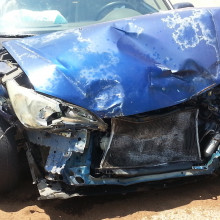
06:30 - Magnetic material signals car crashes
Magnetic material signals car crashes
with Dr John Domann, University of California Los Angeles
Every year, thousands of people are killed or maimed in car crashes. And while 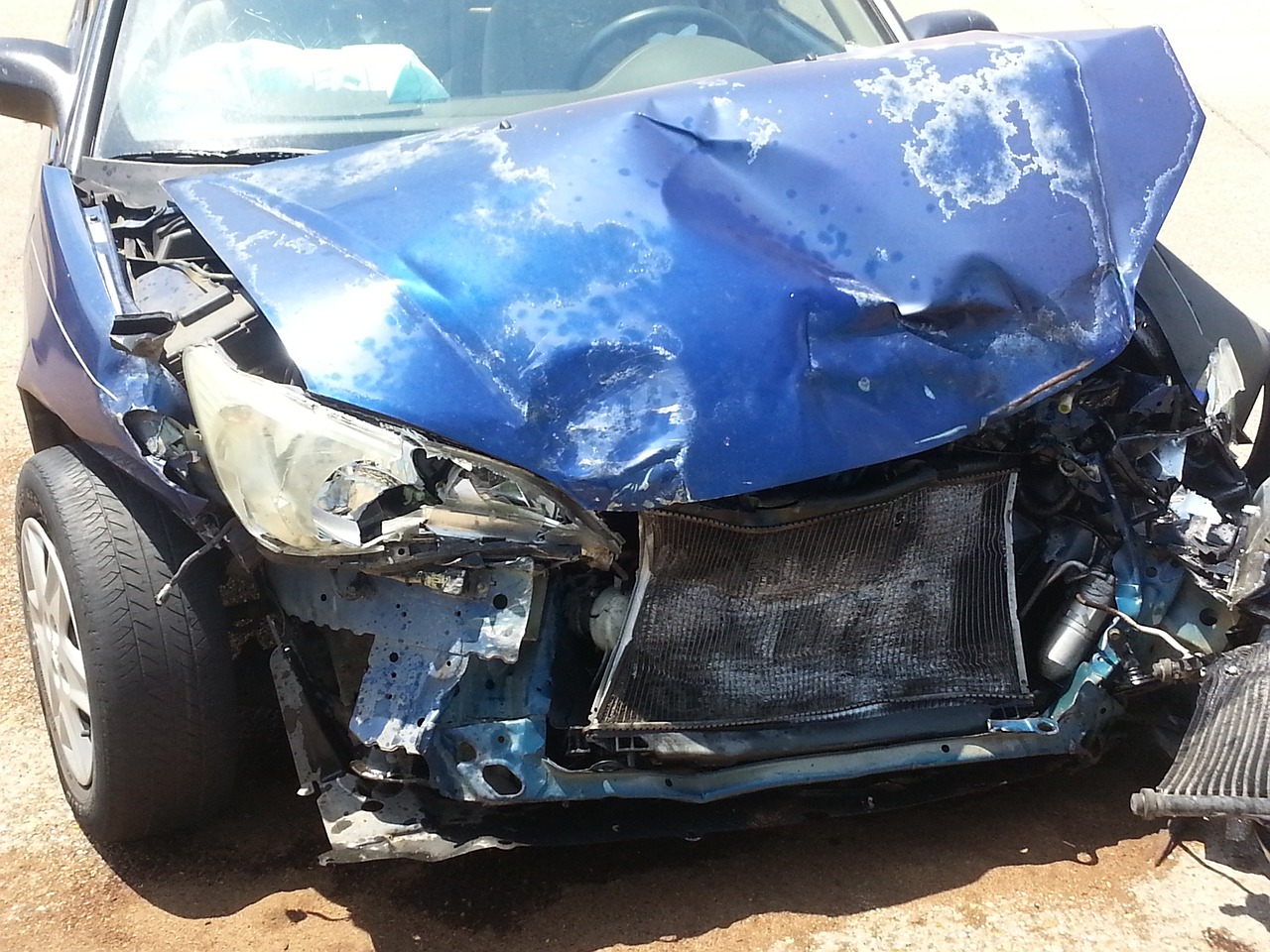 devices like airbags are helping to save lives, they are intrinsically slow-acting, and limited in their actions. But scientists at the University of California Los Angeles are working on a new magnetic material, called Galfenol, that can signal an impact up to a thousand times faster, as John Domann explained to Rosalind Davies...
devices like airbags are helping to save lives, they are intrinsically slow-acting, and limited in their actions. But scientists at the University of California Los Angeles are working on a new magnetic material, called Galfenol, that can signal an impact up to a thousand times faster, as John Domann explained to Rosalind Davies...
John - If you picture you have a nice long cylinder with a north pole at one side and a south pole at the other side, we can start with a really strong magnet. We hit it with a force and it makes it weaker. What's really interesting and useful about this is that we can wrap a few wires around that and if we have a change in magnetisation, we can actually generate an electric current in that wire. And so, we can get some useful electrical energy out of this. We all probably did that experiment when we're little where you wrap a bunch of wires around a nail and you hook it up to a 9-volt battery and you magnetise the nail. You can pick up some paper clips with it or something. We're actually doing the exact opposite. So, we're starting with a magnet and if all of a sudden, you turn that magnet off, you would generate an electric current back into that battery.
Rosalind - And I'm guessing you're not using nails. What material are you using and what makes it so special?
John - So, the material that we're using is called galfenol. It's what's known as a highly magneto-elastic material. And so, that means if we apply a force to it, it can cause very large changes in the magnetisation. And so, for this process we've been describing, that's really ideal and very useful for us. It also has some really good mechanical properties. we could actually build some load bearing structures out of this. We could say, hit it with relatively large forces, and it remains completely intact. It really doesn't sustain that much damage. And so, that's really kind of a novel property in this realm of magneto elastic materials.
Rosalind - What do you think that you could use these materials for?
John - There are a few different spaces you could look at as a use for these for these materials. One of the novel ideas I think we're playing around with is to make these into sort of a wireless impact detector. We have a material where, when a force comes through it, it will change the state of magnetisation. What's really nice is that's kind of the basic premise of how an antenna works. If we had say, a bunch of this galfenol spread in say, the bumper or the side panels of a car, if you were impacted, it's going to change the direction of magnetisation. As such, it will radiate an electromagnetic wave, something that we could pick up. That wave travels at the speed of light whereas the impact is going to travel in your vehicle at the speed of sound. That's three orders of magnitude slower. And so, that means that really, that electromagnetic signal can get to you or get to a computer in your car before the impact really even has a chance of reaching the passengers. Nice, fast-acting computer could start to take some sort of action to protect the passengers and really help limit the damage that occurs in these types of impacts.
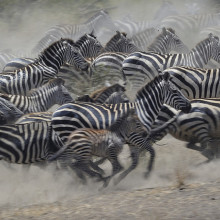
09:37 - How to outrun a cheetah?
How to outrun a cheetah?
with Professor Rory Wilson, University of Swansea
If you've ever watched wild animals like cheetahs pursue their dinner, a striking feature of the chase is that the prey frequently swerves left and right as they run away, apparently to wrong-foot the predator. But why does this work? Rory Wilson studies how animals move at the University of Swansea and he explained to Chris Smith...
Rory - We were really interested in the game of tag that predators play with their prey. We started looking at cheetahs which have this amazing capacity to run after their prey. But of course, the prey don't want to be caught. And so, we set to thinking about, well what determines whether the cheetah catches its prey and when the prey gets away.
Chris - Was this using video footage of predator-prey interactions to measure the different interactions and what strategies each use to try to catch or escape from the other?
Rory - Well, some of us have spent a lot of time looking at cheetahs in particular. But actually, it's extremely difficult to get proper information on turns and speeds and so on by just filming then. So, we were attaching technology to the cheetahs in collars around their necks. And so, when they chase the prey, we could find out things like how rapidly they turn and how many turns they make during a chase and so on, and so forth. And then when we recovered the collars, we could take the information off and put it through our computers.
Chris - What does this show? What do they do?
Rory - Cheetahs will take very small prey and they'll take very large prey. A cheetah itself might weight 30 or 40 kilograms so as much as a big dog. And they'll take prey as small as hares or as big as ostriches sometimes. One of the things that came up was that their hunting performance and the way they hunted depended on the prey they were trying to catch. In essence, the bigger the prey, the less the cheetah had to turn to catch them, so the small prey were jinking this way and that, and the bigger prey were just simply trying to run away with only a few big turns then.
Chris - Why does turning work as a strategy for a small prey item? Why does that help them to get away?
Rory - If you look at any animal and that includes big humans or you look at big animals like rhinoceroses, and you ask them to run or they do run and then they turn as fast as they can, the bigger they are, the wider the turn, that will put, a rhinoceros charging along will take a long time whereas something like a rabbit can turn very rapidly. There are power reasons for that. What that essentially means is if you're a rabbit and you're being chased by a cheetah and the cheetah is nearing and getting closer and closer to you, the thing you need to do is turn because you can actually outturn a cheetah.
Chris - When the rabbit turns, the cheetah takes proportionally longer and so therefore, the rabbit gains or puts more distance between the two of them. I presume that the longer the pursuit goes on, the greater the likelihood therefore that the cheetah is going to be tired out before it's actually caught up with the rabbit.
Rory - That's exactly what happens. In other words, you have the first part of a chase where the cheetah runs towards the rabbit or it runs towards the antelope and it gets closer and closer because the cheetah is faster. And then there comes a point where unless that animal then turns it will get caught by the cheetah and so it tries to do the sharpest turn it can and if it turns at dead right, it will turn really rapidly and the cheetah will overshoot it and then have to come around in a squeeching hard, very power intensive turn. If the rabbit however turns too early then the cheetah says aha! and can cut the corner that the rabbit has put in. so the timing of the turn is really, really critical.
Chris - You've done this on cheetahs. Is this generalisable if I take a bigger or a smaller animal than a cheetah, would I see the same "law" applying?
Rory - Absolutely and in fact, the physics of it tells us that simply the bigger animals have less power to turn, relatively less power to turn. And so, they have these big turning circles. That means the relative sizes of the predators and the prey are really important. If the predator is bigger than the prey, if you're the prey, the best way to get away is to run like crazy and then just as the predator is close enough, you turn as fast as you can. If you're bigger than the predator, then really, there's very little chance that you can get away by turning. You just got to run as fast as you can away and hope that your size and your power will enable you to mitigate some of the problems of the predator.
Chris - What about on the battlefield? If we take the same sorts of things, there are issues with for instance, a missile pursuing an aeroplane or a person pursuing another person, does the same rule apply, do you think?
Rory - Absolutely, the same rule applies. In some senses, you can see it in rugby. If someone kicks the ball up to the one end of the field and then rushes up the fallback it catches it and then the big question is, how fast should the person rushing up to the fall back and rush up because the fall back being stationery can turn rather more quickly. You have to remember that your ability to turn depends on your speed and your mass. So, the lower your speed, the quicker you can turn. But the bigger your mass, the slower you can turn. So, the fall back catching the ball and being stationery, being charged up by a forward from the other side, if that forward doesn't slow down, it's quite easy for the fall back to side step and then run up the field.
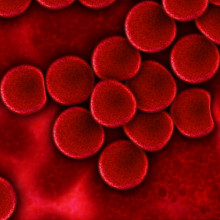
15:30 - Blood clotting 'bullets'
Blood clotting 'bullets'
with Dr Christian Kastrup, University of British Columbia
Stomach antacids might hold the key to preventing you from bleeding to death! 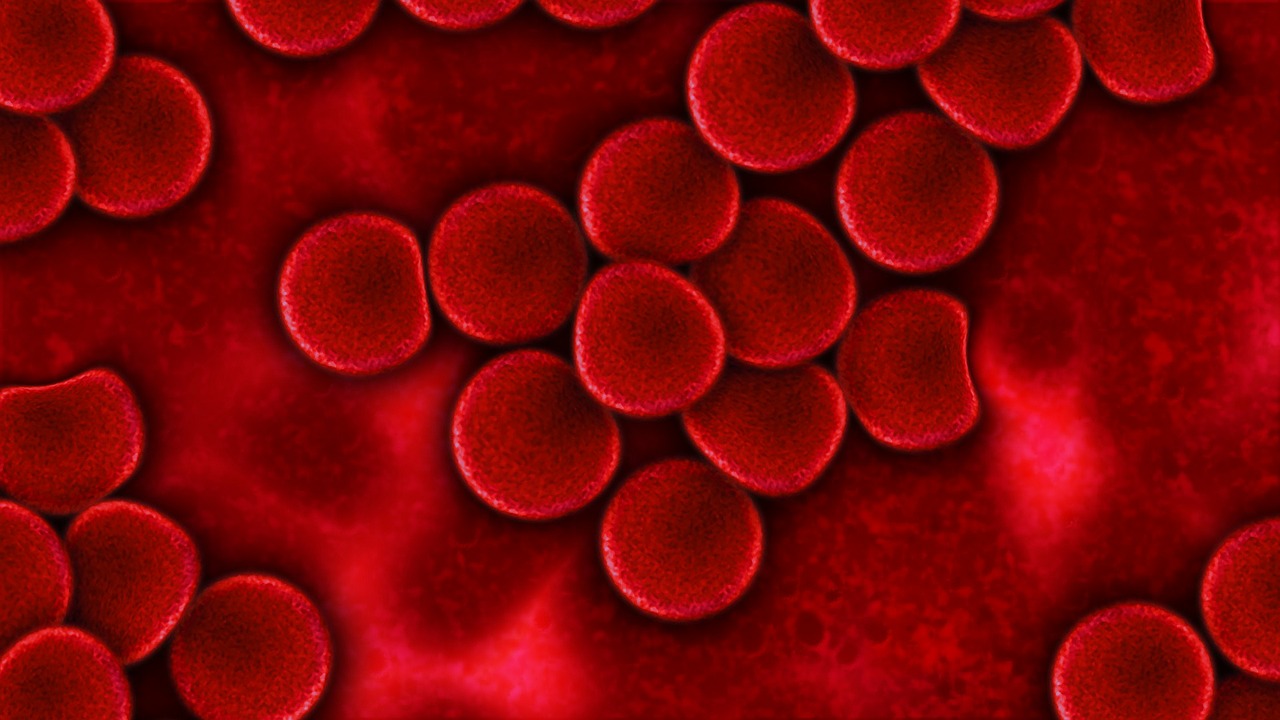 Researchers at the University of British Columbia have used the same chemicals found in stomach-settling medicines to develop a blood clotting treatment that can force its way into wounds and stop bleeding. Christian Kastrup explained how it works to Sam Mahaffey...
Researchers at the University of British Columbia have used the same chemicals found in stomach-settling medicines to develop a blood clotting treatment that can force its way into wounds and stop bleeding. Christian Kastrup explained how it works to Sam Mahaffey...
Christian - The problem we're trying to treat haemorrhage is when you take something that can clot blood, if you take it and try to topically apply it, the blood flow pushes it out, so pushes it away. And so, it's really hard to clot the blood at the damaged blood vessels. So, it's hard to get that coagulant deep into the wound. And so, what we did is we invented a way to propel therapeutics through flowing blood deep into the wound and halt haemorrhage effectively because it clotted blood at the damaged blood vessels. What we made were propelled particles. The particles are made of carbonate and so, when that hits blood, the carbonate and the acid that it's mixed with, it reacts and releases carbon dioxide gas. It's very similar to antacid tablets. And so, when those particles release carbon dioxide gas, the bubbles push and pull the particles. They send them in all directions including upstream through flowing blood.
Sam - So, if you were to put those on a cut, they might actually fizz. Would you feel them fizzing?
Christian - I think you would feel them fizzing. We can clearly see it. As the fizzing is occurring, the blood is quickly clotting and haemorrhaging stops. But it's interesting in severe wounds, bleeding often reoccurs over time, over a period of a couple of minutes or a couple of hours. When that happens in this case, you can see the agent reactivate and you see additional fizzing and foaming, and then bleeding will halt again.
Sam - So, if the wound was to open up, your treatment would still be working and start fizzing and close it back off again.
Christian - That's right. It will re-fizz and propel the particles again to hold that haemorrhage.
Sam - But are there any problems to having carbon dioxide bubbles inside your body when this is happening?
Christian - Carbon dioxide is a really inert gas. It actually dissolves really easily into blood and it isn't harmful. So in the end, the blood is not more acidic or basic than when it started.
Sam - So, if these fizzing little particles are pushing the treatment all around the wound, could it potentially go to somewhere where you wouldn't want the blood to clot?
Christian - It's definitely a major concern of our throughout the study and to understand how far the particles. We know that the particles can transport through wounds and a couple of millimetres into microvasculature into the blood vessels around wounds. We haven't found particles pass that area, but it's an important question and we're still evaluating that in additional safety studies.
Sam - What have you tested these method of treatment on so far?
Christian - So, we tested it on a variety of small wounds as well as large wounds. So this particular experiment, we used a pig model of severe bleeding. We tested it in a wound that mimics battlefield trauma. There's a severe injury to the femoral artery and this is a very catastrophic bleed that would normally lead to death. But when we applied the propelled particles, it rapidly halted haemorrhage and in those wounds, there was complete survival.
Sam - So, you've only tested it on animals so far. How long will it be before you could be testing in humans?
Christian - So compared to many technologies with nature, we think it's actually a really fast plan towards use in the clinic. All the agents used in this technology have already been used in the clinic. So we think there's about a 3-year timeframe until we're able to begin clinical trials.

19:08 - Always forget a face? Blame your genes!
Always forget a face? Blame your genes!
with Nic Shakeshaft, Kings College London
Are you one of those people who never forgets a fact but can't remember a face? 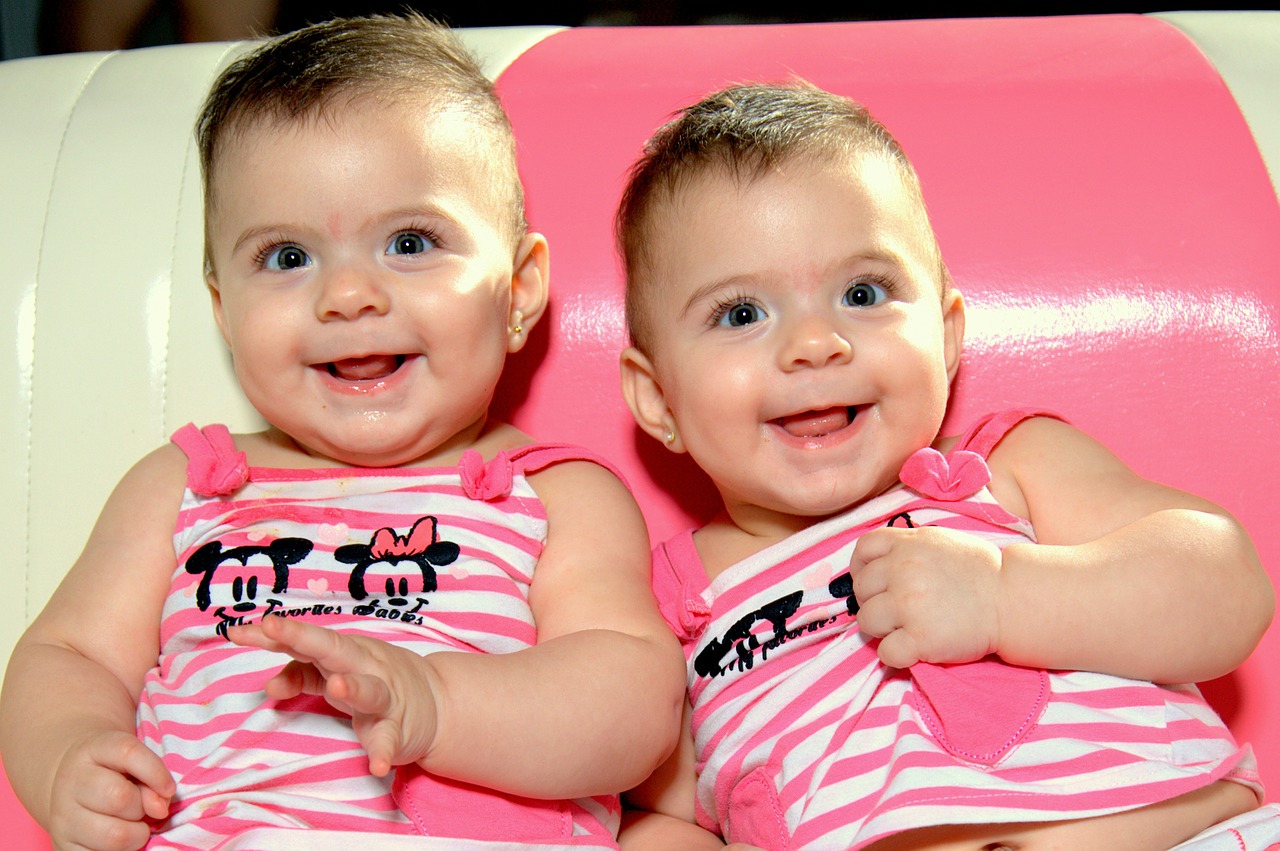 If so, you can probably blame your genes, according to new research published in Proceedings of the National Academy of Sciences this week. They've been investigating the genetics of face recognition with the help of a thousand pairs of twins, as Nic Shakeshaft explains to Kat Arney...
If so, you can probably blame your genes, according to new research published in Proceedings of the National Academy of Sciences this week. They've been investigating the genetics of face recognition with the help of a thousand pairs of twins, as Nic Shakeshaft explains to Kat Arney...
Nic - People differ a lot in how good they are at recognising faces. Obviously, being able to do is quite an important social skill and there's some suggestion that it might have been very important from an evolutionary point of view - telling friend from foe easily. So, we were very interested to look at it from that point of view and being able to do this with a twin study allows us to look at the genetic influences and relate it to abilities in other areas.
Kat - So, how do you use twins to figure out how genetic something is?
Nic - Obviously, two types of twins - identical and fraternal twins. Identical twins share all of their genes whereas fraternal twins on average only half, but both type share their environments to approximately the same extent. If we compare the degree of similarity, the correlation between identical twins and between fraternal twins, then we can use that in various statistical ways to look at the degree of genetic influence.
Kat - So, if identical twins are better at doing a certain task than non-identical twins, you'd say there's probably more of a genetic component to that ability.
Nic - Exactly, yes. Also, if we look at it by comparing genetic influences on different traits then we can also work out the extent to which they shared genes in common.
Kat - How were you actually doing this study?
Nic - We did it online. We have a large group of twins who have been studied throughout their lives and we used a standard test of face recognition, which just gets people to memorise a set of previously unfamiliar faces and then tests their ability to recognise them.
Kat - What do you find when you look at the data? Does this ability to recognise faces, to be good at that, does that seem to be linked to genetics in some way?
Nic - Yes. There is a substantial genetic component. It is substantially heritable. That in itself isn't unusual. That is generally found for abilities in lots of different areas. What is unusual is that the genetic influences on it don't seem to be related to the genetic influences on other things. So in general for example, there aren't genes for reading or genes for maths. Specifically, all of the genetic influences in those areas tend to be shared between them. It tends to be the same genes which are influencing different areas.
Kat - So, there are the same genes that are basically making you good at learning or good at concentrating or good at focusing or something like that and that enables you to have good ability across all these areas.
Nic - For example, yes and undoubtedly, it's genes affecting lots of different things in lots of different ways. But they're overall effects in aggregate is shared between lots of different areas. With face recognition, we find exactly the opposite. So again, there are considerable genetic influences on these things but they seem to be unique to that area. So, the genes that generally affect abilities in other areas almost don't affect face recognition at all. There is some overlap but very little. Almost all of the genetic influences on face recognition don't seem to influence people's ability in any other area.
Kat - So, what does this mean? Does this mean that the face recognition bit of our brain has evolved separately from our other abilities? How does this all fit together?
Nic - That's a very interesting question. There has been a lot of suggestion for a lot of different reasons that face recognition is separate from other abilities and that may have been because it evolved in response to different selection pressures. For example, people think that obviously, being able to tell a friend from a foe easily is likely to be quite a strong survival skill and particularly in a very social species like ours. And so, there's been a suggestion that that makes it particularly important thing which therefore may have evolved independently from other things.
Kat - So, does this help to explain why I'm good at science and I can't remember faces at all?
Nic - Quite possibly, yes. And of course, it's very possible to be good at both. But there is very little relationship between them...
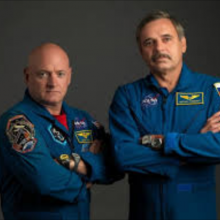
24:41 - How does NASA select astronauts?
How does NASA select astronauts?
with Anne Roemer, NASA
In NASA's last round of astronaut selection, they had 6,100 applicants and  whittled it down to just 8, giving any one applicant less than a half of one per cent chance of being successful. With so many to pick from, how does NASA - or any other space agency - go about finding the chosen few? Chris Smith got some tips from NASA's lead for astronaut recruitment and training...
whittled it down to just 8, giving any one applicant less than a half of one per cent chance of being successful. With so many to pick from, how does NASA - or any other space agency - go about finding the chosen few? Chris Smith got some tips from NASA's lead for astronaut recruitment and training...
Anne - My name is Anne Roemer and I'm the current manager for the astronaut selection programme. I ended up in that job a little bit of luck. We had a gentleman that had done astronaut selection since 1978 who just recently retired and so, I was fortunate to work the last class selection alongside him. NASA does not continuously run astronaut selection. They typically tend to be on average once every 4 years recently.
Chris - There's a lot of people apply when you hold one of your recruitment days. What are you looking for in those applicants?
Anne - Initially, we're looking for some pretty basic qualifications. Folks are required to have a degree in engineering, physical or biological science or math. We also require that they have a minimum of 3 years professional experience beyond that degree. And then additionally, if applying as a pilot, they have to have a thousand hours of flying time in a high performance jet aircraft. And so, those are our starting points. And then as we get into the selection process, and are trying to weed down the number of applicants, we are looking for other things - the combination of educational and operational work experience adaptability, experience working on a team.
Chris - How do you go about identifying people who have those skills and traits and characteristics that you know will make the grade?
Anne - We have quite an involved process. We initially start with candidates submitting their resumes and written materials to provide an initial basis by which to evaluate them. Eventually, we are conducting interviews and we have historically done two rounds of interviews where we're talking to the candidates in person, and getting to interact with them.
Chris - Once you've got someone through the door, what's the chances that they're actually going to get into space? Is it 100 per cent or thereabouts or is it actually still quite slim?
Anne - No. Actually, once we have made the commitment and selected them and they typically go through a 2-year training programme as astronaut candidates, we are probably just under 100 per cent of those folks actually fly in space. We've had a few that have not for a wide variety of reasons, but the majority by far, end up sticking with their NASA astronaut careers and ultimately, flying in space.
Chris - Would you like to be an astronaut, Anne?
Anne - I can honestly say no! I have a slight fear of small confined spaces so I'm not sure that would be a suitable career objective for me.
Chris - Would you pass your own assessment and selection criteria, do you think?
Anne - Probably, not!
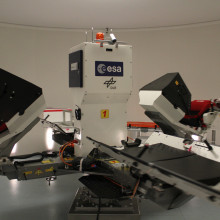
28:04 - Are you fit for orbit?
Are you fit for orbit?
with Dr David Green, Kings College London
So you've made it through the rigorous selection process and NASA have signed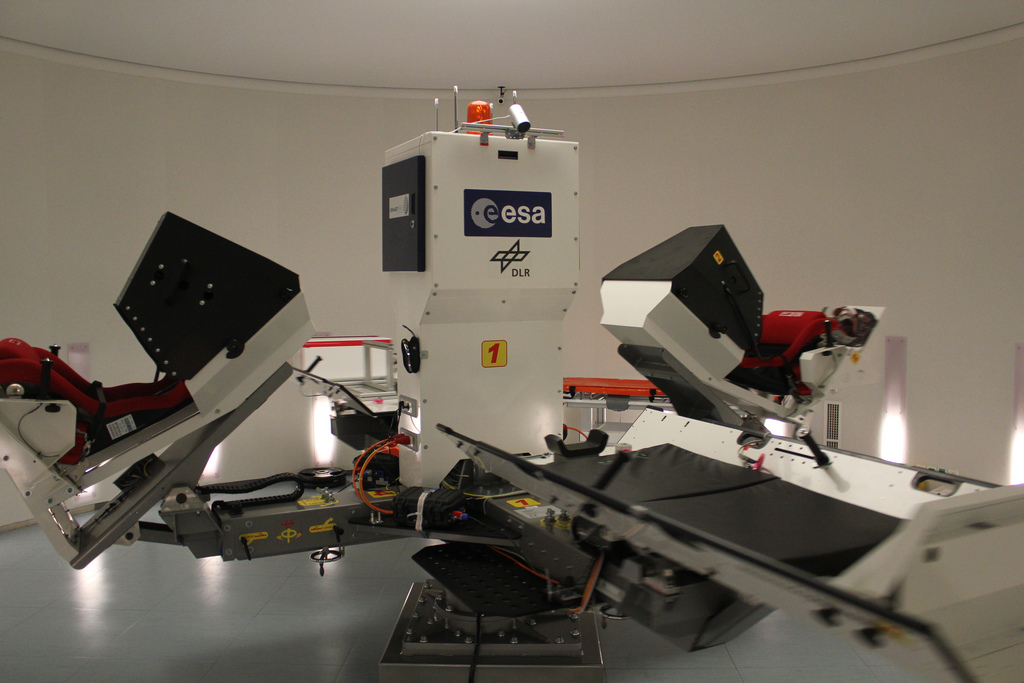 you up. But what physical and mental characteristics actual make for a good astronaut? David Green is a lecturer in human and aerospace physiology at King's College London. He spoke to Chris Smith...
you up. But what physical and mental characteristics actual make for a good astronaut? David Green is a lecturer in human and aerospace physiology at King's College London. He spoke to Chris Smith...
Dave - So, they don't need to be elite athletes. They need to be reasonably fit. But it's this really key thing of having a very low risk of injury and of illness because we don't have the capacity to make them better in space.
Chris - What about the other physiological challenges that someone will face in space because obviously, we've evolved to live here on Earth, it's a very different environment up there. what sorts of challenges does that pose and how can people make sure that they can meet that challenge?
Dave - We've evolved in a gravitational environment, Earth gravity. And so, when we go into space, and the absence of that gravitational field means that our body has a number of changes. So we lose muscle because we don't need so much muscle. We lose bone because we don't need so much bone. That can present problems when we return to Earth or if we land on another planet. If we were to land on Mars, we have much lower bone minimal density and that first step onto the Martian surface could lead to a trip.
Chris - Are there some people for whom that's less of a problem? Are some people naturally better at able to conserve their muscles and bones when they're in those low gravity environments?
Dave - That's a really good question and to be honest, we don't know. All we can do is try our best to try to ameliorate to stop these changes. So astronauts spend up to 2.5 hours of each day performing what we call exercise countermeasures in order to stop this loss of bone and this loss of muscle.
Chris - Because if you load up the bones and you load up the muscles with some kind of exercise, this sends a signal saying to the body, "You do actually need to preserve your bone. You do actually need to preserve your muscle and keeps them strong."
Dave - Absolutely. But despite that 2.5 hours spent doing exercise when frankly, there's lots of other activities the astronauts should be doing, it's not completely prevented the loss of muscle and the loss of bone. So, there's still much work to be done.
Chris - What about the thing that Kat eluded to, the sense of giddiness that many people described and that kind of thing, are some people much more capable of coping with that?
Dave - The reality is, most of us become motion sickness and astronauts are not immune to it either. The difficulty is knowing just how many astronauts experience what we call space adaptation syndrome. If you ask an astronaut when they have flight status, of course, they will say, "Oh, I didn't feel sick" then when they retire, you find out that up to 70 per cent of astronauts will then admit to feeling extremely sick. What we do know is lots of anti-emetics, so drugs that stop people feeling sick, they are consumed on the international space station. So, we don't know who's taken them but we know huge amounts are being taken.
Chris - Now, one of the other physical demands that are faced by astronauts is exposure to extreme G forces. Now, we can actually test how this affect the body without having to leave the ground at all by placing a person in a device that spins them around at very high speed. This is called a human centrifuge. The one that we've got here in Britain was built in the 1950s. It's capable of 30 revs a minute and that's equivalent to 9 G. Our space boffin, Sue Nelson went to give it a go and was helped by Alex Stevenson, lead physiologist at the centrifuge.
Male - So locked in, what I need you to do now is tighten your straps.
Sue - Okay, now.
Male - Right. So you just got to put your feet on the pedals there and all you've got to be happy that you can just tense up your legs if you need to in case the vision comes and you lose...
Sue - Do you have any advice? Do I have to actually just sit here as I would normally as if I was watching TV or do I have to tense my muscles up?
Male - To get the most out of the situation, try and be relaxed as you can. It's always difficult on the first round because you don't know what to expect, but try and be as relaxed as you can and just watch what happens to the vision, see how it feels. We'll start very low so the risk of actually losing consciousness because you haven't got enough blood going to your brain is very, very low. So, just to give you a feel of what it's like, it's sort of acceleration you might get or the gravity you might feel at Jupiter - that kind of level so 2.6 G so a fair amount. But not enough to knock you out, but enough to make you feel 2.5 times heavier than you are now. So, what you can do is I'm going to say, be relaxed and try and move your hands up a bit. Control your hands. Just feel how heavy they weigh at that level. Just be thoughtful that obviously, when you bring your hands up, they weigh 2.5 times, but they will come down a lot quicker because they weigh a lot more. So just feel it.
Sue - Okay, take me to Jupiter.
Male - Standby, 2.6 G, 15 seconds...
Male - That's just building up now. So describe how you feel.
Sue - Oh, I've just gone to the right hand side and I can feel pressure on my cheek forcing back. My cheek is as if it's stretching my face. I will relax to make it easier. And my ears have popped slightly and it turns and I've gone upright again. Wow! What a weird feeling.
Male - Describe the feeling when it stopped.
Sue - Your stomach is lurching as if you've gone over that top of a rollercoaster and suddenly stopped. The pressure relieving from your cheek bones.
Male - Would you likely do up until something like 3.4 G?
Sue - What would that be like?
Male - You'd feel obviously a little bit more heavier. I won't ask you to touch your nose, but if you just get to concentrate on keeping your vision and tensing your abdomen and legs, you shouldn't grey out at all.
Sue - Okay.
Male - In that case, we're going to go to 3.4 G for 15 seconds please.
Male - Standby, 3.4 G, 15 seconds.
Male - Get ready to tense if you need to. That's 3.4...
Sue - This is not as pleasant. I expect I look like a Bernard dog. I can feel my hands really pressurised. It's difficult for this one. That feels like you've done the biggest rollercoaster ride ever. I don't think I could've touched my nose if I tried.
Male - No, it does make a significant difference but it was worth just feeling the weight of your arms at 3.5 times the normal weight.
Sue - And the feeling of stretch on your face.
Male - I guess we know what you look like when you're going to be 15 years older now.
Sue - Thank you.
Richard - What was that like? Let's get the immediate reaction?
Sue - I really enjoyed it. It's given me a new found respect for what astronauts must go through on take-off and landing because it's not just a thrill ride which I love. There is that feeling of uncomfortableness. For me, it was in my face. I felt as though my face was being dragged down with the pressure.
Chris - That was space boffin's Sue Nelson and Richard Hollingham at the end there, trying out Kinetics Human Centrifuge. Dave Green who's a lecturer in Human and Aerospace Physiology at King's College London is still with us. Dave, tell us what was actually happening to Sue there?
Dave - So, Sue was spinning around on the axis. They kind of did it tilted so that her feet were pointing towards the centre, the axis of rotation. What then happened is all the fluid was being moved down towards her feet. And she mentioned was that she started to get grey out. So, you'll lose colour in your vision and you actually get curtaining, so you actually lose your peripheral vision. That's the warning sign before you get what we call "G lock" which is G induced loss of consciousness. So, because fluid and blood is being moved down towards your feet, there isn't enough blood to supply the eyes and there isn't enough blood to supply the brain. So, the brain essentially switches off so you should take care when you see that grey out, to start doing those anti-G straining manoeuvres.
Chris - That was when they made reference to tensing her muscles. What does that do? Increase the amount of blood returning to the heart to keep your blood pressure up.
Dave - Exactly. So, if you tense the calves and your legs, you use them as basically pumps. So, we call that a muscle pump. So, you're pumping blood back to the heart so that it can pump it right into the rest of the body or back up to the brain.
Chris - Sue tolerated 3.5 G there. What would be the equivalent for an astronaut in a day to day sort of take-off and landing situation?
Dave - So, the G can go up to 7 G and there have been incidents this way it's gone over 7 Gs on their return to Earth so that was a real bump. But of course, what we have to remember in space, in weightlessness, there's no G. so rather than fluid being moved down towards your feet, it gets moved up towards your face so you get what we call chicken legs, pig face...
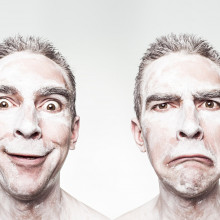
36:44 - Could you charm your way into space?
Could you charm your way into space?
with Dr David Green, Kings College London
What are the mental challenges of space travel and how do we make sure we 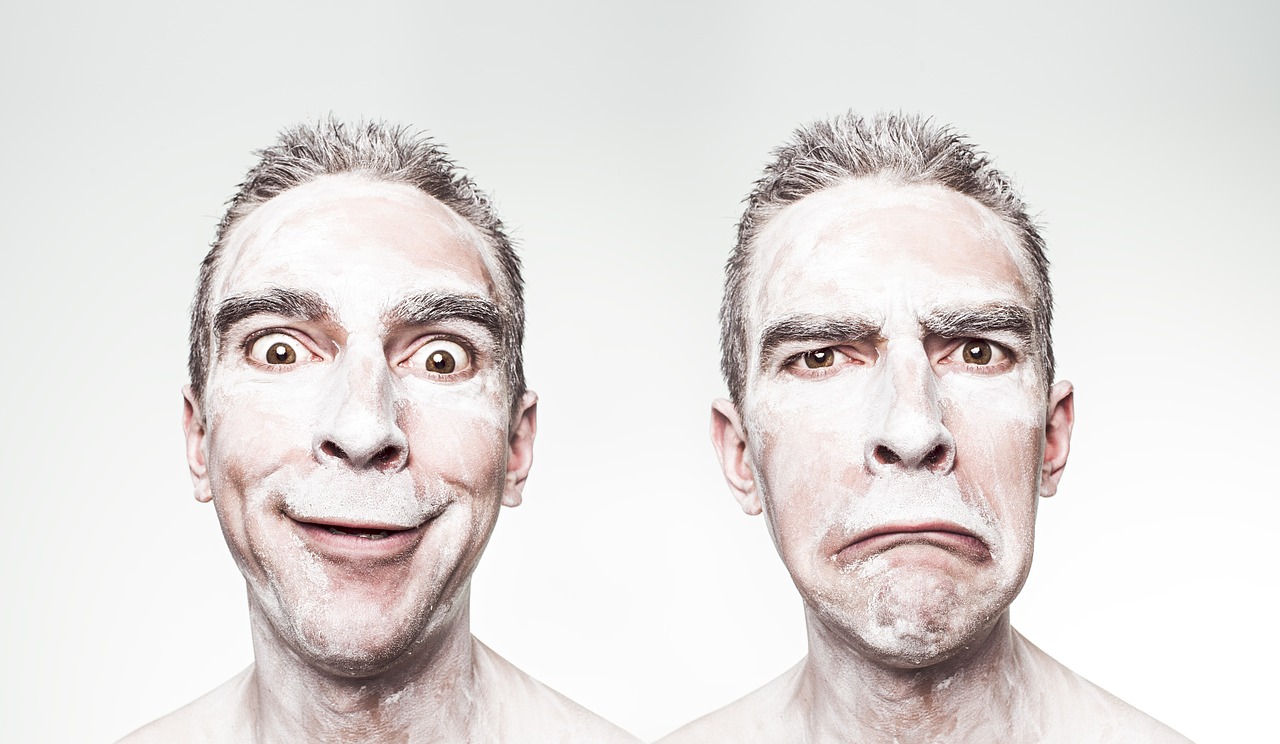 send the right team of people off in the space shuttle? Dr David Green from Kings College London told Kat Arney about the character traits needed for a good astronaut...
send the right team of people off in the space shuttle? Dr David Green from Kings College London told Kat Arney about the character traits needed for a good astronaut...
Dave - First, they have to be very competent. They have to be really good at maths and arithmetic. They have to be able to remember really long and complicated sequences of tasks and be able to perform them when there's real stress, when there's a real problem. There's also the softer skills - cooperation, collaboration, knowing when to be the leader, when to take a step back, a little bit like The Apprentice - the team member that's always wanting to be team leader, isn't really the best person to be in your team.
Kat - What about kind of sociability? Do you need introverts, extroverts, party animals, or you just need like one party animal per crew?
Dave - It sounds like a question that we really should have the answer to but to be honest, we don't. I think one of the thing is, you need to be able to deal with conflict. But not to run, there's nowhere to run, there's nowhere to hide, so you need to face up to that conflict, but to diffuse it in a positive way.
Kat - And there's lots and lots of tasks that astronauts might have to do ranging from the very stressful situation of take-off to the mundane stuff on board. Do you need people that have a very wide range of skills that can tolerate the mundaneness of space life?
Dave - Well, much of being in space is doing the mundane tasks and you need people that can do those tasks. But understand that a small task that could in some senses be insignificant is important to the bigger picture to the whole mission. So, the Russians love making paper...
Kat - That origami kind of stuff, yeah.
Dave - Yes and you think what's that actually got to do with space flight. But by monitoring people doing the same task time and time again but to a high performance, so a very high level, that's the kind of person you need in space.
Kat - So, someone who can do endless amounts of origami patiently and correctly. But how else would you test people's things like team skills and that kind of stuff?
Dave - So, one of the things is you need to have people that are high functioning people, people that are good at things, but that see that bigger picture. So, you get them to do tasks. Where, you don't give them all the information and you put them in pairs or in groups. And so, there's an outcome for the whole group and they have to be working so that they are doing what they need to do but they're not compromising the overall goals of the team.
Kat - The next thing is, the isolation. I mean, I find it hard enough working with Chris and the team sometimes but what about if we were on Mars, just us forever? How do you train people or select people who can cope with that kind of isolation?
Dave - On Earth, there's three main models of being so isolated. There's the Nemo which is what NASA use. They become aquanauts. So, it's a habitat that's 90 meters down off Key Largo in Florida. And so, they go down and they live and work there for 7 to 14 days. Then the Russians did something like Mars 500. They had an international crew staying basically in a warehouse that was mocked up to be a little bit like a spacecraft for 520 days continuously. Not a lot of fun, but they ultimately knew they were in Moscow. And then there's Concordia which is in Antarctica. Actually, that's the best thing because 9 months, you're on your own. No one can come to help you.
Kat - And presumably, no one can hear you scream. So, thanks very much. That's Dave Green. He's a lecturer in Human and Aerospace Physiology at King's College London.

40:18 - Helen Sharman: the first UK astronaut
Helen Sharman: the first UK astronaut
with Helen Sharman, Imperial College London
Clearly being an astronaut is no picnic, with vomit-inducing G forces to contend with and demanding psychological challenges. So why does anyone do it? In 1991, Helen Sharman became the first British astronaut when she flew to the Mir Space station with Russian Cosmonauts. Connie Orbach went to meet her and find out what enticed her into such a demanding career...
Helen - I started off wanting to be a nurse because my mum was a nurse and then I thought it would be nice to do something a bit more mechanical engineering kind of but I didn't really know what to call mechanical engineering. I just wanted to work with machines. And then I didn't know what I wanted to do and then I wanted to be a doctor. So, I chopped and changed and I really wasn't sure, but I always knew that it had to be something that involved science, something logical, something perhaps constructive. But science engineering, it was always somehow in there.
Connie - So, how did you go from that to being an astronaut?
Helen - I decided, as I didn't know what I wanted to do and I had to make a decision of sorts, that at 18, I would go off to universities to do chemistry because with chemistry, I could go physical or I could go biological, lots of different things you can do with chemistry. As I was unsure, it seemed like I keep my options open kind of thing to do. And then at the end of my chemistry degree, I knew I wanted...
Connie - From university, Helen continued exploring the world of science in London where she first worked at an electronics factory and then at Mars confectionary as a research technologist working on ice cream and chocolate.
Helen - Until I just heard an opportunity as I was driving home from work listening to the car radio, and then there was an advert that came on, "astronaut wanted". This job advert just described an opportunity that I had never even considered. If I'm honest, I applied not so much to go into space, but I applied to do the training because what other job would give you the ability to use your science, learn about the technology of spacecraft, and so on, live in another country, speak Russian, and to do some physical training - all part of the same job. Wow! You know, this the job for me. So, I applied for the job and yes of course, I wanted to go into space but I would've gone for the job even if I knew the space wasn't going to be at the end of it.
Connie - What sort of training did you have to go through before you could go to space?
Helen - I first had to learn Russian because all the training was being done in Russian and also of course, on a Russian speaking space station, if you have an emergency situation, the last thing you need to be doing is getting out your dictionary to wonder what the commander is telling you to do and then some theoretical training. So, we learned about the theory of flight and ballistics astro navigation. Gradually, it got more and more practical - things like parachute jumps, in order to do the weightless training called the "vomit comet" - up and down in a series of loops. But while the aircraft is falling, you're falling inside the aircraft. So, you're just in free fall which is what weightlessness is about. You're not truly weightless. You have weight. You're still being pulled down by the Earth's gravity, but you don't feel it.
Connie - That must've been amazing.
Helen - It is. I mean, everybody agrees it's the best bit of all the training. Everybody looks forward to it. We get to do it 4 times and each time, there are 10 loops.
Connie - you better hope you don't get too seasick.
Helen - A lot of people get sick which is why it's called the "vomit comet" and it's the type of people who were typically motion sick on Earth. If you tend to be travel sick, you tend to be sick in the "vomit comet" and you also tend to be sick when you get into space. So, it's actually quite a good selector in some respects as well.
Connie - So, when you've done all these training, when you finally went up there to do this work, how was it? Did it live up to the expectations?
Helen - It was exactly as the training has taught me. The actual feeling though, you can never really duplicate on Earth. It takes your body really two days or so to adjust to feeling weightless because the fluid shift Now the fluids in your body tend to move towards your head to start with because your heart is still pumping towards your head because your heart thinks, "I've got to pump up to keep all these blood pressure in the brain to stop the poor person from fainting." But you don't need that so much in space so your brain tells your kidneys to excrete extra urine and you then feel much better. But still, your body is continuing to adapt even though you don't then notice it. So, you continue to lose calcium from the bones and potassium from the muscles. But no, after 2 days, it felt great and I felt as though I wanted to be up much longer. I always reckon about 3 months.
Connie - Helen's mission was only 8 days, so much shorter than most of today's astronauts who usually go for around 6 months. Are there different skills required for this modern-day long term space travel?
Helen - The difference nowadays to the early astronauts is that nowadays, people need to be team players whereas in the early days, they were sort of the real right stuff, the fighter pilots, highly reactive people, and they needed to be. They tended not to make good team players. They wouldn't make good modern astronauts and probably, modern astronauts wouldn't make good sort of right stuff fighter pilot type of the originals where they really did have to - they were the brave ones. They were the real explorers and we were - I'm often called an explorer, but I don't think of myself as such. I explored but I went into parts of space where other people had been. I went to a spacecraft where other people had been.
Connie - If today's astronauts aren't intrepid explorers but patient team players it all sounds a little less exciting. Does anyone even want to be an astronaut anymore? I popped out onto the streets of London to see what the kids of today want to be when they grow up...
Child 1 - Hello.
Connie - What would you like to be when you grow up?
Child 1 - A teacher.
Child 2 - Police.
Child 3 - Right now I'm thinking an engineer.
Child 4 - Cafe lady.
Child 5 - I would like to be...an acrobat.
Child 6 - A train.
Child 7 - Astronaut.
Child 8 - I'm not sure though I think I might want to be a vet.
Connie - So not the most scientific test but it doesn't seem like astronaut is most people's first choice, what about Helen Sharman, if she could do it again, would she?
Helen - Everybody wants to go back into space, I have not met a single astronaut who would not return, however old they are.Yeah, everybody would return to space.
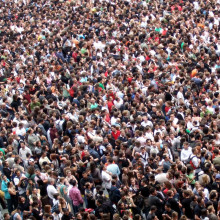
46:47 - What it takes to get people into space
What it takes to get people into space
with Libby Jackson, UK Space Agency
Helen Sharman was the first British astronaut but in mid December Tim Peake will be the second when he joins the International Space Station or ISS. But of course this mission isn't just about Tim Peake and without the help of many others it would never be possible. Libby Jackson from the UK Space Agency explained to Kat Arney about the scale of the team behind a mission like Helen's or Tim's
be the second when he joins the International Space Station or ISS. But of course this mission isn't just about Tim Peake and without the help of many others it would never be possible. Libby Jackson from the UK Space Agency explained to Kat Arney about the scale of the team behind a mission like Helen's or Tim's
Libby - Well, Tim and the five other crew who will be up there with him really are the tip of a huge pyramid that stretches right around the world. It's hard to put an overall number on but suffice to say, around the world, it stretches into the thousands of people who were keeping Tim and his crew up in space.
Kat - What kind of jobs are they doing? I mean, I can think of the obvious ones like the people in the flight centre doing the countdown. But tell me about some of those roles and then maybe some of the more, perhaps unexpected ones.
Libby - So, as you said, people that often people think about are the mission controllers and they're there round the clock, 24 hours a day, 7 days a week looking after the crew, being there to respond to any problems that happen and so on. There's the scientists - the ISS is first and foremost a scientific laboratory. And whilst we see the crew, do a lot of the human physiology experiments, there are many, many other experiments that are done with very little impact on the crew time and those are being run by scientists around the world. You've got all the trainers. Astronauts need to be trained. They go through years of training to make sure that they're ready for the science, for the emergencies, for their space walks and so on. You've got the engineers who design these things, there are the people who built it, there are the medics, there are the doctors, there are the lawyers, there are the people like myself looking after the education programme. The list is truly endless.
Kat - I heard a recent talk from Dallas Campbell about the history of the space suit and it was just all these people who make and design and test the space suits for each individual astronaut.
Libby - There are so many interesting roles and one of the ones I like to always tell children about are the people who look after where everything is on the space station. So, the space station is the size of about a 5-bedroom house and it's got 6 people living and working in it. But unlike your house at home, the occupants change every 3 months and some things aren't used every day. Some things are only used every few years for example. And we've got people all around the world. They're called cosmos here in Europe whose job it is is to keep track of everything. So, when the crew want to know where something is, they're asking the people on the ground.
Kat - Wow! I really need one of those in my house. With such a big team like this, this must be a lot of money. What financial scale does it take for say, a typical mission?
Libby - Well, the figure that's usually quoted for the ISS as a whole and it's been flying since 2000 and was being designed for many years before that, is about 100 billion US dollars. So, it's a huge chunk of money. But the UK has only very recently just joined the ISS programme. Historically, we didn't do human space flight. And at the ESA ministerial in 2014, we contributed 50 million pounds, about, towards the ISS programme which is bought our scientists access to the research facilities, to the scientific laboratories. For the opportunity for Tim to go up there himself and provide this wonderful inspiration to everybody and we're really making the most of that, capitalising on it for the next generation to inspire them to hopefully take up careers in science and engineering.
Kat - I think it's probably worth more than that. But we're talking now about potentially missions to Mars. We've done the moon, we're going into space, all this kind of thing, what do we still need to do in terms of space programmes to actually get spaceships that could start going towards Mars? What can we do and what still do we need to figure out?
Libby - I think one of the big things we're still learning about are the things that we need to do to get humans there. so, we've been talking today about the physiological changes. Just one of the small areas that we really still investigating and it's one of the experiments Tim may be participating in is looking at how the eye is changed. Dave was talking about all the fluid shifts and how the fluid moves around your body and we're finding out more and more that over a 6-month or a one-year mission, astronaut's eyesight can change. Sometimes people have come back to Earth after 6 months and have had very bad changes to their eyesight. Some cosmonauts at some point even reported that they couldn't see their procedures in the Soyuz capsule on the way home. Sometimes that eyesight change is permanent in fact. But that's just one area where we're still doing scientific experiments to look, to understand how this will change and how we can get to Mars. The trip there will take 6 months to a year.
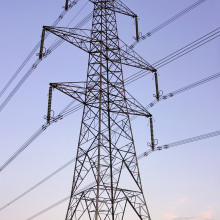
51:42 - Why do power lines make so much noise?
Why do power lines make so much noise?
Charis - On Facebook, Rachel speculates that it’s when there's too much electricity and some tries to escape whereas Henry thinks it’s down to vibrations, or as Steven said, “Good vibrations.” Meanwhile Andrew Griffiths is a semiconductor engineer from the company IQE…
Andrew - In power lines themselves, the noise is usually due to something called a corona discharge which is when the electric field is strong enough to make the surrounding air conduct. The sound you're hearing is a transfer of energy from the power line to the surrounding air. Designers of power lines want to avoid this noise as it results in a power loss. But it’s partially dependent on atmospheric conditions such as the air pressure and humidity. For example, if it rains, the noise can become louder due to the increased humidity, and addition of water droplets in the surface of the wires. This creates a more conductive environment. The corona discharge and therefore the noise can be reduced by making sure the power lines are thicker and the space in between the power lines is sufficient. This energy loss can also be reduced by decrease in the voltage. However, if we decrease the voltage, the current then increases. This increased current causes more power loss due to heating so you have to balance how much energy high voltage loses in noisy corona discharge and how much low voltage transmission would lose in heat.
Charis - But why does the discharge produce a steady buzzing sound?
Andrew - Electricity is distributed to homes by alternating current. Alternating current is where electric current moves backwards and forwards at 50 times a second. Any noise that you hear in power lines or transformers is associated with this frequency.
Charis - So the noise is a 50 hertz buzz produced as the voltage rises and falls in the cable, 50 times per second. But what causes the voltage in current to alternate like this in the first place?
Andrew - Domestic electricity is generated by a process called electromagnetic induction which converts movement into electricity. It does this by rotating a magnet relative to some wires. As the magnet turns, the voltage goes positive and negative because of how the wires are set up. This positive and negative changing voltage pushes and pulls the current in two directions.
Charis - Thank you to Andrew Griffiths from IQE for that answer.









Comments
Add a comment